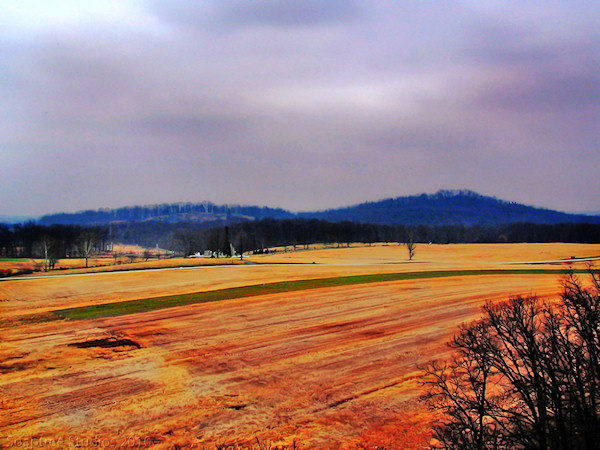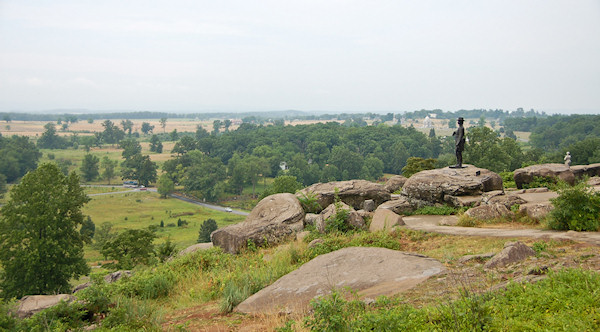Little Round Top

Source: Map by Hal Jespersen, www.cwmaps.com. Used under a Creative Commons Attribution 3.0 license.
Disaster Averted
At the southern end of Cemetery Ridge lay two large hills called Round Top and Little Round Top. The larger hill, Round Top, was covered in trees, and thus had limited strategic value. The trees prevented use of the hill for cannon. By contrast, Little Round Top had clear views and was a good location for observation and for cannon.
However, due in part to the decision by General Daniel Sickles to move forward to the wheatfield, there were few Union soldiers on either of the Round Tops. Colonel William C. Oates’ 15th Alabama Regiment attempted to take Little Round Top. However, Brig. General Gouverneur K. Warren, the Union army's chief engineer, spotted the Confederate troops and ordered Union soldiers to occupy Little Round Top. The arrived just minutes before the 15th Alabama attacked. The Confederates launched wave after wave of attacks, attempting to take Little Round Top and outflank the Union line. The very end of the Union line was held by the 20th Maine, led by Colonel Joshua L. Chamberlain. With his men almost out of ammunition, he ordered a bayonet charge, which succeeded in defeating the 15th Alabama, and ending the greatest threat to the Union's position. The bayonet charge became known as one of the most famous episodes in the Civil War.
The hills in the background of the photo below are Round Top (right) and Little Round Top (left).

Source: Image by Soaptree on Flickr, used under a Creative Commons License.
The photo below shows the view of the battlefield from Little Round Top.

Source: Image by Britt Reints on Flickr, used under a Creative Commons License.
Questions
- Why was Little Round Top so important to the Union army?
- What did the Confederates hope to achieve with their attacks on Little Round Top?

